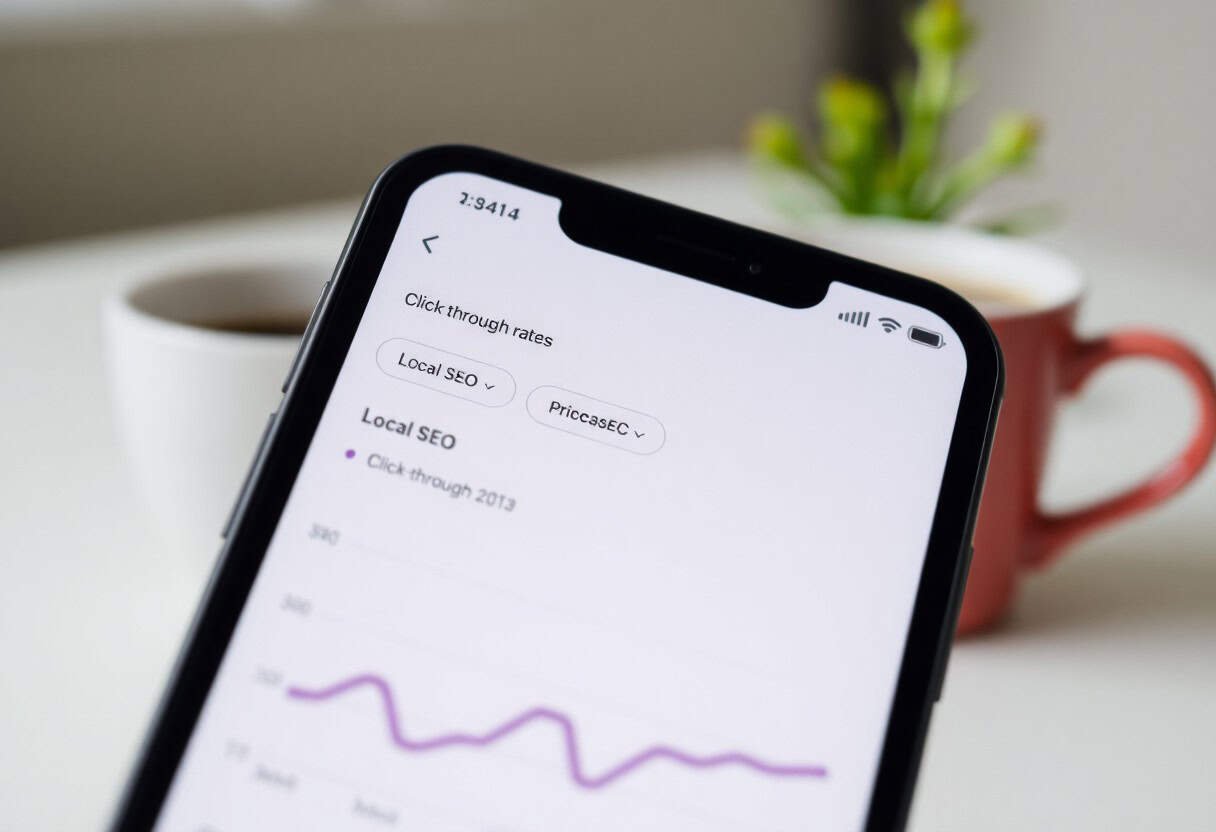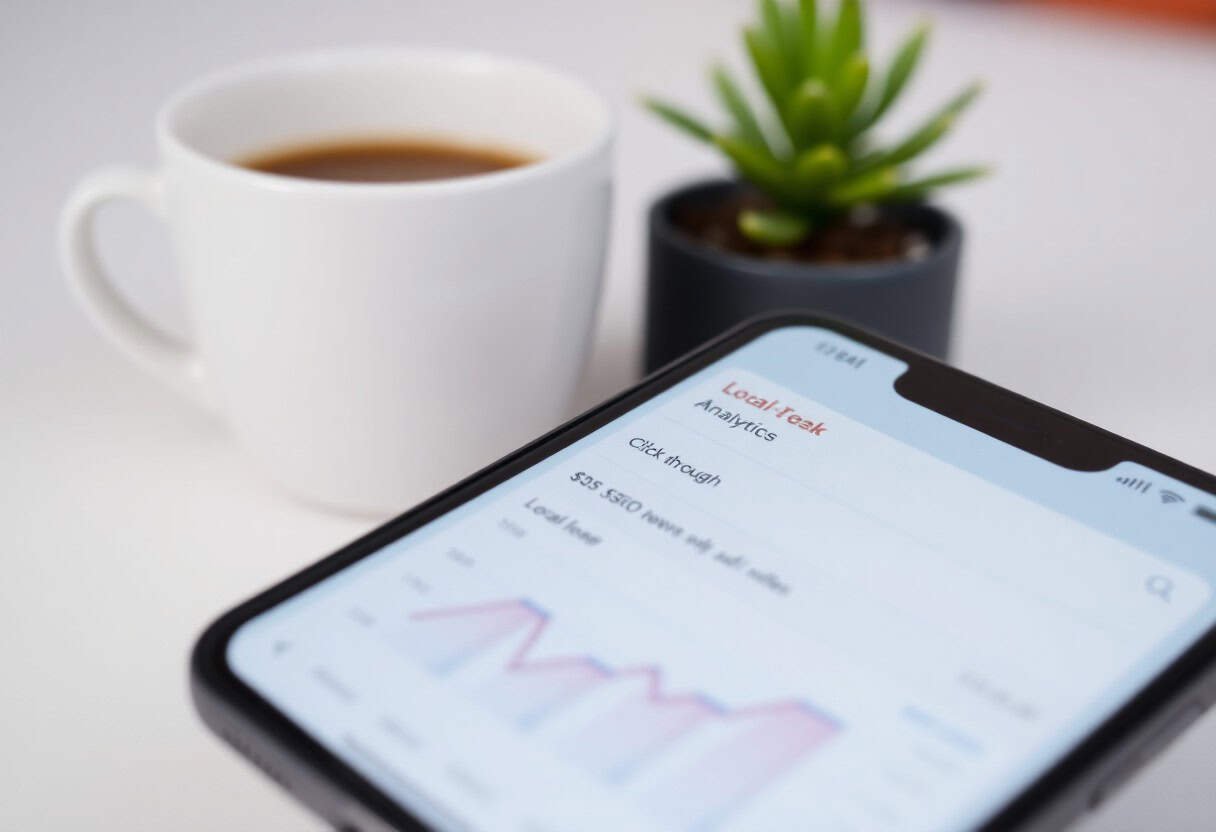SEO is more than just optimizing your website; it extends to how users interact with your listings, particularly through click-through rates (CTR) on Google. Understanding the correlation between CTR and local SEO performance can empower you to refine your strategy, enhance visibility, and ultimately attract more customers. This post explores how improving your CTR can influence your local search rankings and drive better engagement for your business.
Key Takeaways:
- Click-through rates (CTR) can influence local SEO rankings, as they indicate user interest and relevance.
- A higher CTR may lead to improved visibility in local search results, as search engines prioritize user engagement metrics.
- Optimizing titles and meta descriptions can enhance CTR, potentially benefiting local search performance.
The Role of Click-Through Rates in Search Algorithms
Defining Click-Through Rate (CTR) and its Importance
Click-through rate (CTR) measures the percentage of users who click on your website link after seeing it in search results. A higher CTR indicates that your title tags and meta descriptions are compelling and relevant, directly influencing user engagement. This metric not only demonstrates the effectiveness of your content in attracting clicks but also signals to Google that your site is worthy of a higher ranking, thus playing a vital role in your local SEO strategy.
How Engagement Metrics Influence Google Rankings
Engagement metrics, including CTR, dwell time, and bounce rate, significantly influence Google rankings. When users click on your link and remain on your site, it signals search engines that your content meets their needs. A high CTR combined with low bounce rates suggests that visitors find your content valuable, leading to better rankings in local search results. This interaction reinforces your site’s authority and relevance, further enhancing your visibility to potential customers.
Engagement metrics like CTR and bounce rate provide insights into user behavior on your site. For example, if your CTR is 5%, but the bounce rate is 70%, it indicates that while users are clicking through, they aren’t finding what they expected. In contrast, a site with a 10% CTR and a 50% bounce rate shows users are more satisfied with what they find. This ongoing interaction helps shape your overall SEO strategy, guiding improvements in content and user experience to drive both CTR and engagement toward better local search performance.
Local SEO: The Unique Factors at Play
Local SEO operates under distinct principles that separate it from traditional SEO approaches. Factors such as user intent, local relevance, and proximity to searchers influence local ranking outcomes significantly. Key aspects include:
- Localization of content and keywords
- Google My Business optimization
- Customer reviews and ratings
- Local backlinks and citations
This fine-tuned focus on locality ensures that search results cater not just to content quality but also to geographic relevance.
The Interplay Between Local Listings and Organic Results
Your local listings and organic search results aren’t isolated; they interact closely. A strong listing on Google My Business enhances visibility in local searches, which can lead to an increase in organic clicks. Positive CTR from local results informs Google that your business is relevant for local queries, potentially boosting overall rankings. The synergy between these elements emphasizes the necessity of optimizing both aspects for an effective local SEO strategy.
How Local Search Algorithms Treat CTR Differently
Local search algorithms assess CTR uniquely compared to national or global searches. High CTR from a Google My Business listing signals relevance to Google, suggesting that your business matches user intent in that specific locale. For example, if your cafe receives numerous clicks from local searches, the algorithm may prioritize your listing over others, even if they have higher general authority. Essentially, local factors heavily influence how search engines evaluate engagement.
This localized approach means that CTR is a more weighted metric in local SEO, impacting not just visibility but also positioning. In scenarios like hyper-local searches, your business gains traction through consistent engagement from nearby users. Enhanced user interaction points to a strong local presence, prompting search algorithms to favor your business. In this dynamic, local engagement becomes both a ranking factor and a pathway to greater visibility in your area.
Quantifying the Impact of Click-Through Rates on Local Results
Click-through rates (CTR) play a significant role in determining your visibility in local search results. Higher CTRs can signal to search engines that your listing is relevant, leading to improved rankings. By analyzing metrics like the number of clicks versus impressions, you can quantify the relationship between CTR and your position in local search results. Understanding this impact enables you to adjust your strategies, potentially resulting in increased visibility and more customers discovering your business online.
Analyzing Trends and Correlations in Local Searches
Examining the trends between CTR and local search rankings reveals strong correlations. Data from various sources indicates that as your CTR increases, so does your likelihood of appearing higher in local results. By tracking click patterns and maintaining optimal titles and descriptions, you can enhance user engagement, leading to improved rankings. This analytical approach allows you to make data-driven decisions that enhance your local SEO efforts effectively.
Case Studies: Businesses That Benefited from Increased CTR
Numerous businesses have successfully increased their visibility and driven foot traffic through enhanced CTR strategies. For instance, a local bakery improved its CTR by 25% through targeted ad copy, resulting in a 40% increase in website traffic and a corresponding boost in sales. By examining successful case studies, you can uncover valuable insights on how to leverage CTR for local SEO gains.
- Local bakery: 25% increased CTR led to 40% more website visits and 30% rise in sales.
- Real estate agency: Optimized listings saw a 33% increase in CTR, correlating with a 50% uptick in client inquiries.
- Fitness studio: Increased CTR by 30% through engaging visuals, resulting in a 45% boost in new memberships.
- Salon: A 20% CTR improvement after keyword optimization led to a 35% rise in appointment bookings.
These case studies illustrate that enhancing your CTR can lead to substantial improvements in local search performance. You’ll find actionable strategies in these examples which you can apply to your own business. Additionally, tracking metrics and making consistent adjustments based on performance data is vital to maximize your local SEO potential.

Strategies for Optimizing Click-Through Rates in Local SEO
Improving click-through rates in local SEO involves several effective strategies. Start by focusing on your meta titles and descriptions, ensuring they not only reflect your business but also capture attention. Implementing schema markup can enhance how your listings appear in search results, making them more informative and visually appealing. Additionally, maintaining an updated presence on local business directories can further elevate your visibility. Utilizing these techniques collectively can significantly boost user engagement and ultimately impact your local SEO success.
Crafting Compelling Meta Titles and Descriptions
Creating enticing meta titles and descriptions is key to capturing clicks. Ensure your titles are concise, include relevant local keywords, and clearly convey what sets your business apart. Descriptions should highlight unique offerings or promotions, using action-oriented language that encourages users to click. Tailor these elements to your target audience to better resonate with their needs and intentions.
Leveraging Schema Markup and Local Business Listings
Schema markup simplifies how search engines understand your business details, enabling richer search results like reviews, ratings, and pricing. Local business listings should be accurate and consistent across platforms, improving both visibility and credibility. This combination can lead to higher click-through rates as potential customers see an informative snapshot of your business right within search results.
By implementing schema markup, you present critical business information such as hours, location, and contact details more effectively. Rich snippets, generated from schema data, can increase visual appeal, grabbing user attention. Consistency in local business listings across Google My Business, Yelp, and other directories strengthens your online presence. Research shows businesses with complete and accurate listings gain 70% more clicks than those without. This strategy directly enhances your local SEO by improving visibility and encouraging user interaction.

Future Trends: The Shift Towards User Engagement Metrics
As search engines evolve, user engagement metrics are taking center stage in SEO strategies. This transformation emphasizes not just clicks, but also how visitors interact with your content post-click. Your website’s ability to retain visitors, lower bounce rates, and foster meaningful interactions will increasingly influence search rankings. This shift challenges you to create content that captivates users and encourages them to engage with your site more deeply.
The Growing Importance of User Behavior in Local SEO
Understanding user behavior becomes paramount in local SEO as search engines adapt to favor websites that provide exceptional user experiences. Metrics such as session duration, pages per visit, and user interactions signal to search engines that your content is valuable. You should focus on optimizing your site’s layout and functionality, ensuring it meets local search user expectations and needs, ultimately driving improved rankings.
Anticipating Google’s Next Moves for Local Search Ranking
Google’s algorithms are constantly evolving, with an increasing focus on context and relevance in local search results. Future updates may prioritize how well your business fits the specific needs of local searchers, emphasizing personalized search results. You can prepare by staying informed about emerging technologies, such as AI insights and advanced local algorithms, which dictate these changes and adapting your strategies to align with these anticipated shifts.
Summing up
Ultimately, click-through rates from Google can significantly influence your local SEO performance. A higher CTR indicates to search engines that your content is relevant and engaging, which can help improve your rankings in local searches. By focusing on effective title tags and meta descriptions, you can enhance your visibility and attract more clicks from pertinent local users, thus bolstering your overall search presence. Prioritizing your click-through rate can lead to tangible benefits in your local SEO strategy.
FAQ
Q: Do click-through rates from Google influence local SEO rankings?
A: Yes, click-through rates (CTR) from Google can influence local SEO rankings. Higher CTR indicates to Google that users find your listing relevant and useful, which can positively impact your ranking in local search results.
Q: How can I improve my click-through rates for local SEO?
A: To improve your click-through rates, focus on optimizing your title tags and meta descriptions to be more appealing and relevant to users. Using clear calls-to-action and engaging visuals in your Google My Business profile can also help enhance visibility and attract clicks.
Q: What role does user engagement play in relation to click-through rates and local SEO?
A: User engagement affects click-through rates significantly; if users click on your listing and engage with your content, it signals to Google that your business is pertinent to local search queries. This can enhance your local SEO performance and potentially elevate your rankings.

